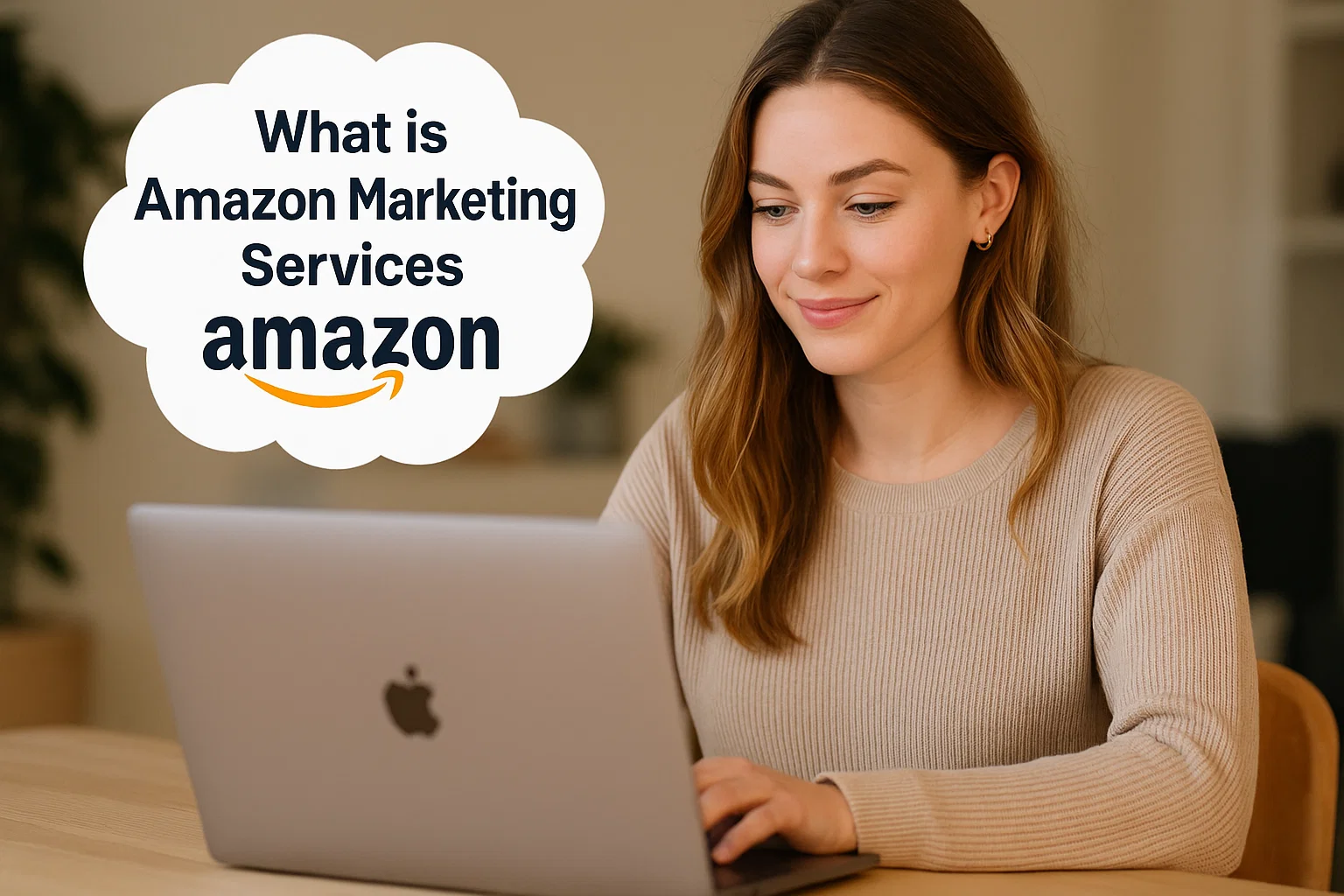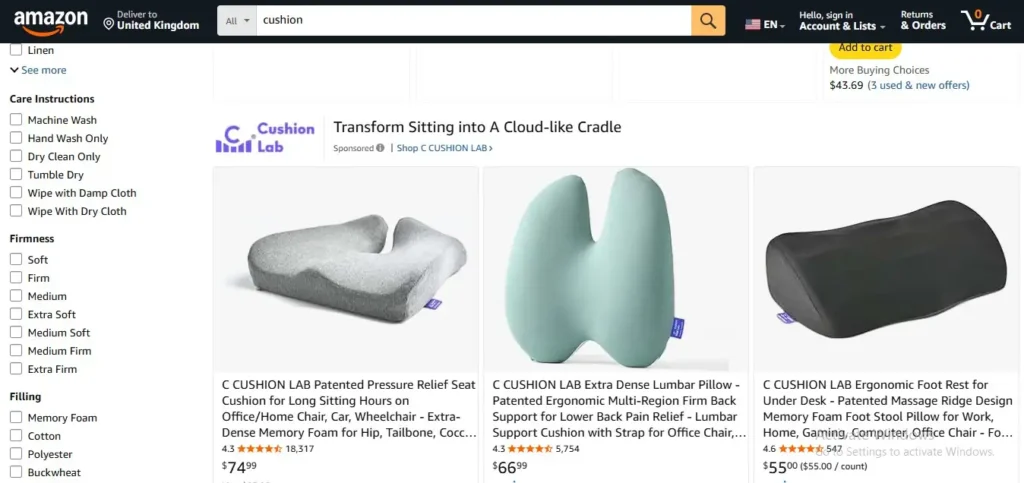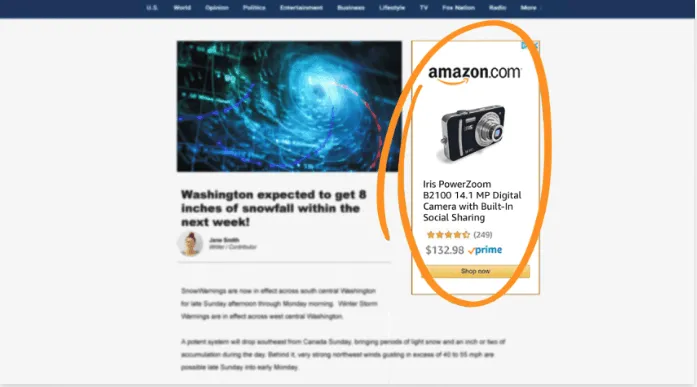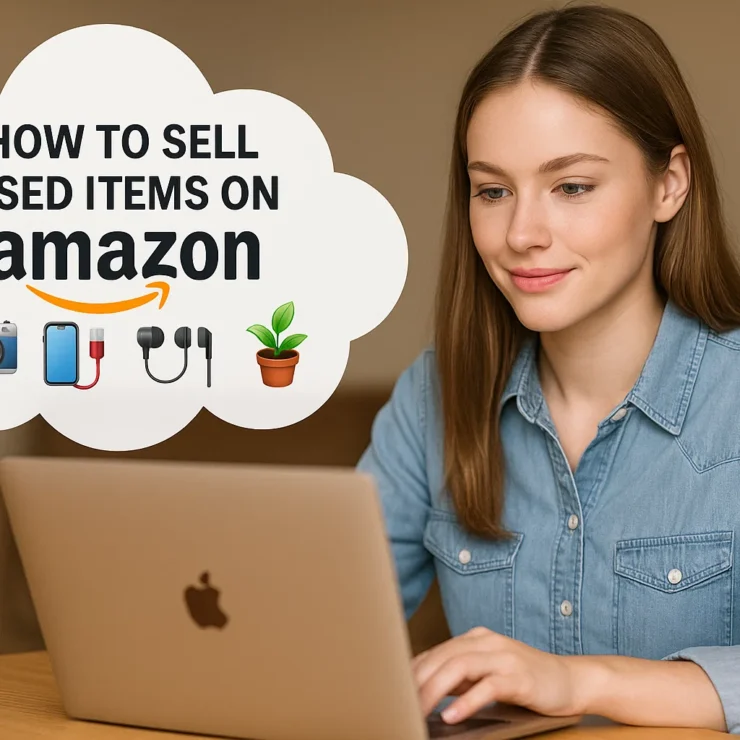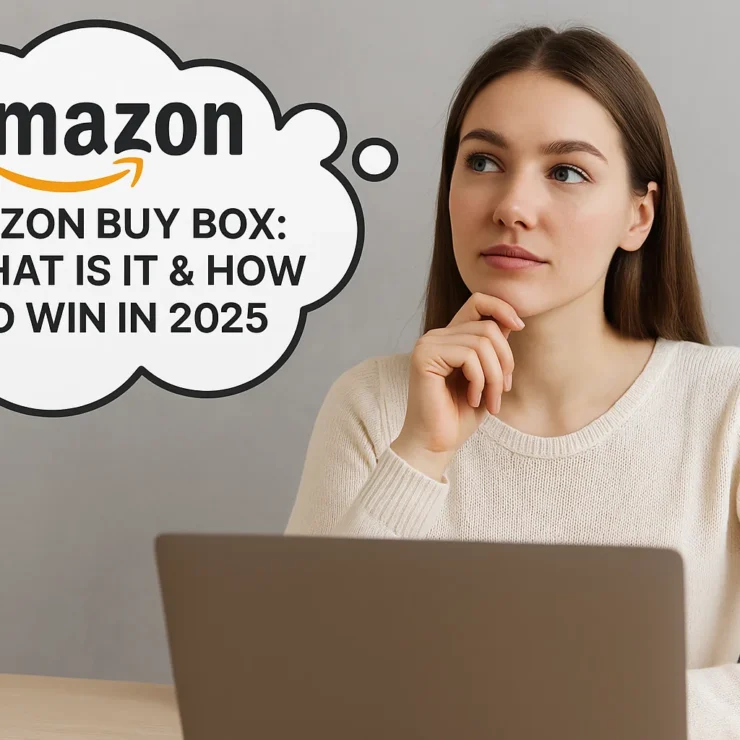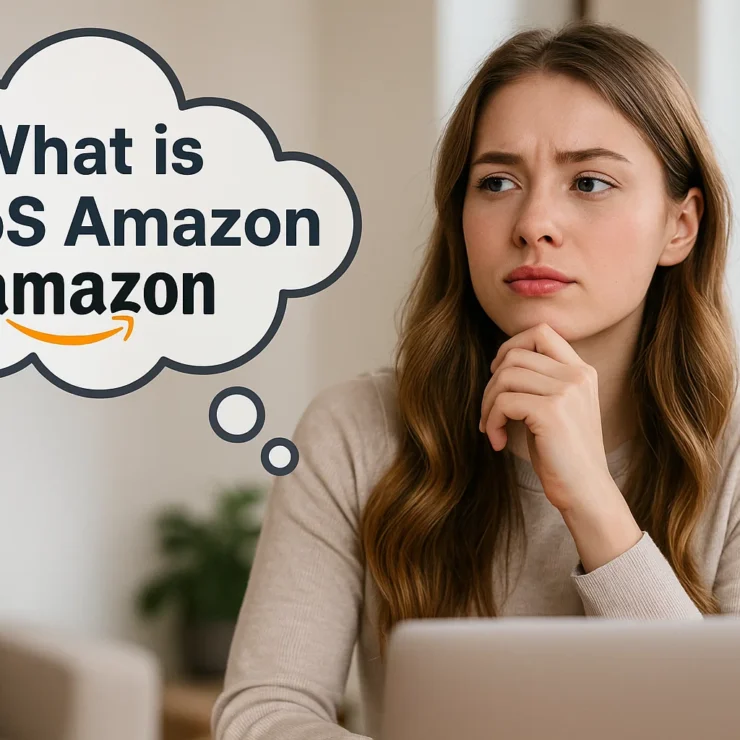In today’s fast-paced eCommerce world, visibility is everything — and nowhere is that more true than on Amazon. With millions of sellers competing for the same buyers, standing out requires more than just great products and optimized listings. That’s where Amazon Marketing Services (AMS) comes in.
In 2025, Amazon’s advertising platform has evolved significantly, becoming smarter, more data-driven, and essential for long-term success on the marketplace. Whether you’re a new seller launching your first product or an established brand looking to dominate your niche, mastering Amazon Marketing Services can make all the difference.
In this guide, we’ll walk you through everything you need to know — from what Amazon Marketing Services are and how they work, to the different types of ads, strategies, and tools that can help you maximize performance and ROI.
Learn how to list and sell used items effectively on Amazon, reach the right buyers, and maximize your earnings in 2025.
What Is Amazon Marketing Services (AMS)
Amazon Marketing Services (AMS) is the collective name for Amazon’s suite of advertising tools designed to help sellers and brands promote their products directly on the Amazon platform. Although it has since been rebranded as the Amazon Advertising Console, many marketers and sellers still refer to it as AMS.
At its core, AMS gives you access to a range of ad types — including Sponsored Product Ads, Sponsored Brand Ads (formerly Headline Search Ads), and Sponsored Display Ads — that enable you to increase product visibility, reach your target audience, and drive more conversions.
Through AMS, sellers can create, manage, and optimize ad campaigns that appear across multiple high-visibility placements such as search results, product detail pages, and even on and off Amazon through Amazon’s vast advertising network. The platform provides deep customization options, allowing advertisers to target customers based on keywords, interests, demographics, product categories, and geographic locations.
One of AMS’s strongest features is its advanced analytics and reporting system. With access to key performance metrics like impressions, clicks, conversion rates, and ad spend, sellers can continuously monitor campaign performance and make data-driven adjustments to maximize their ROI (Return on Investment). Over time, these insights help advertisers identify high-performing keywords, understand customer buying behavior, and fine-tune strategies for better visibility and profitability.
In short, Amazon Marketing Services empowers sellers to reach potential buyers right where purchase intent is highest — on Amazon itself. As competition on the marketplace continues to grow in 2025, mastering AMS has become a vital part of every successful seller’s marketing strategy.
Understand the Amazon Buy Box algorithm and follow actionable steps to increase your chances of winning it consistently in 2025.
Types of Ads Available Through AMS
Amazon Marketing Services (AMS) provides a wide range of ad formats designed to help brands and sellers attract, engage, and convert their target audience. Depending on your goals, ad budget, and the type of campaign you want to run, AMS offers several advertising options — including Sponsored Products, Sponsored Brands, Sponsored Display, Amazon DSP, Amazon Attribution, and Amazon Stores.
Let’s explore each one in detail.
Sponsored Display Ads
Sponsored Display Ads (previously known as Product Display Ads) are dynamic, visually engaging ads that appear across Amazon’s ecosystem — from search results to competitor product detail pages and even off-Amazon websites. These ads are designed to reach shoppers both on and off Amazon, making them ideal for retargeting and increasing product visibility.
How they work: Sponsored Display Ads automatically generate creative assets using your product image and pricing details. They can appear based on a shopper’s interests, browsing history, or product interactions.
Best for: Driving quick conversions, retargeting cart abandoners, and boosting brand recognition.
Requirements:
Available to sellers enrolled in the Amazon Brand Registry, vendors, book vendors, and agencies working with registered sellers.
Cost:
Sponsored Display operates on a pay-per-click (PPC) model. You pay only when shoppers click your ad. CPC varies depending on competition, keyword relevance, and product category. There’s no minimum budget required.
Learn what Amazon BSR means and how this crucial ranking metric affects product visibility and long-term sales success.
Sponsored Brand Ads
Formerly called Headline Search Ads, Sponsored Brand Ads appear at the top of Amazon’s search results, showcasing your brand logo, custom headline, and multiple product listings. These ads are perfect for promoting your brand identity and increasing awareness among shoppers who are actively searching for related products.
How they work: Sponsored Brand Ads drive shoppers either to your Amazon Storefront or a custom landing page featuring selected ASINs. You can use eye-catching creatives, taglines, and product selections to increase recognition and click-through rates.
Best for: Building brand awareness, highlighting new collections, and cross-promoting products.
Requirements:
You must be a registered brand on Amazon Brand Registry, a vendor, or an authorized agency.
Cost:
These ads also follow a pay-per-click model, with a minimum daily budget of $1. According to Amazon, Sponsored Brand Ads can generate an average ROI of 5.5x, meaning every $1 spent could bring in $5.50 in sales when optimized effectively.
Get expert insights on Amazon’s image requirements and best practices to create high-quality visuals that attract more buyers.
Sponsored Products
Sponsored Products are the most common and widely used ad type on Amazon. These ads promote individual products and appear directly within search results and on competitor product pages.
How they work: You bid on specific keywords related to your product. When a shopper searches for those keywords, your ad appears among organic listings, helping your product gain visibility and boost sales.
Best for: Increasing sales of specific items, launching new products, or boosting rankings in competitive niches.
Requirements:
Open to all professional Amazon sellers, vendors, and book sellers.
Cost:
Sponsored Products also run on a PPC model. The average CPC varies depending on category and keyword competition. No minimum daily budget is required, making it suitable for both new and experienced sellers.
Amazon DSP (Demand-Side Platform)
Amazon DSP is a programmatic advertising platform that allows brands and advertisers to buy display, video, and audio ads at scale — both on and off Amazon. It’s ideal for advanced marketers who want to build awareness and retarget audiences beyond Amazon’s marketplace.
How it works: DSP enables audience segmentation based on demographics, shopping habits, interests, and lifestyle data. You can run ads across Amazon’s properties (like IMDb and Twitch) and thousands of third-party websites.
Best for:
• Building large-scale brand awareness.
• Retargeting shoppers who viewed your listings but didn’t convert.
• Reaching new audiences across the web.
Requirements:
Available to vendors, registered sellers, agencies, and enterprise-level advertisers.
Cost:
Amazon DSP can be accessed in two ways:
Self-Service DSP: You manage campaigns yourself, with no management fees.
Managed Service DSP: Amazon manages campaigns for you, with a recommended minimum spend of $50,000.
Discover how Amazon Merch on Demand in 2025 empowers creators to monetize designs without upfront inventory costs.
Video Ads
Amazon Video Ads allow you to showcase your products using dynamic visual content, helping you engage customers through storytelling. These ads play across Amazon devices, Fire TV, Freevee, Twitch, and third-party streaming platforms.
Types of Video Ads:
In-Search Video Ads – Appear within Amazon search results, boosting engagement.
OTT (Over-The-Top) Streaming Ads – Display short video clips on connected TVs, Fire TV, and partner apps.
Best for: Building emotional connections, showcasing premium products, or reaching audiences through entertainment channels.
Requirements:
Open to brands, vendors, agencies, and sellers — even those who don’t sell directly on Amazon.
Cost:
Amazon Video Ads are typically sold programmatically on a CPM (cost-per-mille) basis — you pay per 1,000 impressions. Minimum campaign budgets:
$10,000 for self-service
$50,000 for managed service
Learn what Amazon retail arbitrage is, how it works, and practical tips to start reselling profitable products in 2025.
Amazon Attribution
Amazon Attribution is a free analytics and tracking tool that helps you measure how your marketing campaigns across channels (like Google, social media, or email) impact shopping activity and sales on Amazon.
How it works: Attribution tags track traffic from off-Amazon sources, letting you see how many customers your external campaigns convert into Amazon sales.
Best for: Tracking ROI, optimizing ad spend, and identifying which platforms drive the most sales.
Requirements:
Available to vendors, registered sellers, and agencies.
Cost:
Completely free.
How to set up an Amazon Advertising campaign
Achieving success with Amazon Advertising requires a clear strategy and consistent optimization. Follow these steps to create, manage, and improve your campaigns effectively.
Step 1: Access Amazon Advertising Tools
Sign in to your Amazon Seller Central or Amazon Advertising Console account.
Go to the Campaign Manager section and click on “Create Campaign” to begin.
Step 2: Select the Appropriate Ad Type
Choose the ad format that aligns with your marketing objectives:
Sponsored Products – Perfect for promoting individual listings and boosting visibility.
Sponsored Brands – Great for increasing brand recognition and featuring multiple products together.
Sponsored Display – Ideal for re-engaging shoppers who have viewed your products or similar items.
Step 3: Set Your Budget and Bidding Approach
Begin with automatic targeting to collect valuable keyword insights.
Modify your bids based on competition and performance trends.
Establish a daily budget to manage spending and enhance your return on investment (ROI).
Step 4: Track and Evaluate Campaign Results
Monitor metrics such as Click-Through Rate (CTR), Conversion Rate, and Advertising Cost of Sales (ACoS).
Identify strong-performing keywords and adjust bids to capitalize on them.
Step 5: Continuously Optimize for Better Outcomes
Incorporate negative keywords to eliminate irrelevant traffic.
Experiment with different ad creatives and audience segments.
Regularly fine-tune your bids and strategies to maximize profitability.
Discover how to sell on Amazon without holding inventory, and start your business in 2025.
Benefits of Using Amazon Marketing Services
Amazon Marketing Services (AMS) has evolved into one of the most powerful advertising ecosystems in eCommerce. For sellers, brands, and agencies, it provides the ability to promote products directly where customers are already searching and shopping.
Whether you’re looking to boost visibility, drive conversions, or strengthen brand loyalty, AMS offers multiple advantages that make it an essential tool for every Amazon seller in 2025. Let’s explore the key benefits in detail.
Enhanced Product Visibility
With millions of listings on Amazon, simply having a great product isn’t enough — it needs to be seen.
AMS allows sellers to strategically place ads in high-traffic areas like search results, competitor listings, and product pages.
By using Sponsored Products, Sponsored Brands, or Display Ads, you can ensure that your products appear exactly where potential customers are looking. This increases exposure and significantly improves your chances of conversion.
Why it matters:
Ads appear above organic listings, instantly grabbing buyer attention.
Higher visibility often translates into more clicks, more sales, and improved organic rankings over time.
Increased Sales and Conversions
Amazon Marketing Services is designed to drive measurable sales performance. Because AMS ads target customers who are already in a “buying mindset,” they deliver higher conversion rates than most other advertising platforms.
When your products show up during active purchase intent (such as when users search specific keywords), you gain immediate exposure to an audience that’s ready to act.
Why it matters:
Reaches high-intent shoppers already browsing your product category.
Encourages faster conversions and shorter sales cycles.
Helps boost new product launches and seasonal promotions.
Precision Targeting and Audience Segmentation
AMS offers advanced targeting capabilities that let you reach your ideal customers with precision.
You can target shoppers based on keywords, interests, shopping behavior, demographics, and past interactions with your brand.
With Amazon DSP and Sponsored Display Ads, you can even retarget customers who viewed your listings but didn’t complete their purchase — keeping your brand top of mind and maximizing every opportunity to convert.
Why it matters:
Reduces wasted ad spend by showing ads only to relevant audiences.
Supports both on-Amazon and off-Amazon targeting through DSP.
Enhances personalization for improved ad performance.
Measurable ROI and Data-Driven Insights
One of the biggest advantages of AMS is its built-in reporting and analytics dashboard. You can track performance metrics such as impressions, clicks, conversion rate, advertising cost of sales (ACoS), and return on ad spend (ROAS).
Using tools like Amazon Attribution, sellers can even track how off-Amazon marketing channels (like Google Ads or social media campaigns) influence sales on Amazon.
Why it matters:
Provides real-time performance tracking.
Helps optimize campaigns based on accurate data.
Enables smarter budgeting and long-term strategy planning.
Improved Brand Awareness and Credibility
AMS isn’t just about driving sales — it’s about building a brand.
Through Sponsored Brand Ads, Video Ads, and Amazon Stores, sellers can create a consistent and engaging brand presence within Amazon’s ecosystem.
Having your logo, messaging, and product line displayed professionally increases buyer trust and helps position your brand as an authority in your niche.
Why it matters:
Strengthens brand recognition among target audiences.
Builds long-term customer loyalty and repeat purchases.
Creates a professional brand experience within the marketplace.
Flexible Budgeting and Cost Efficiency
Unlike traditional advertising, Amazon Marketing Services operates primarily on a pay-per-click (PPC) model — meaning you only pay when someone clicks your ad.
This allows sellers of all sizes, from small startups to global brands, to advertise efficiently within their means.
You can set daily or campaign-level budgets, test different ad formats, and scale what’s working without overspending.
Why it matters:
No minimum budget for most ad types.
Total control over ad spend and pacing.
Optimizable campaigns for maximum return on investment.
Retargeting and Cross-Selling Opportunities
AMS allows sellers to reconnect with shoppers who showed interest but didn’t make a purchase — a critical advantage in eCommerce.
With Sponsored Display and DSP campaigns, you can retarget those audiences with tailored ads, reminding them of your products and driving them back to your listings.
Additionally, by analyzing buyer behavior, you can create cross-selling campaigns that promote related or complementary products to past customers, increasing average order value (AOV).
Why it matters:
Recaptures lost sales opportunities.
Encourages upselling and cross-selling.
Keeps your brand visible across the buyer journey.
Scalability for Every Seller Type
Whether you’re an individual seller or a global enterprise, AMS offers solutions that grow with your business.
You can start small with Sponsored Products, expand into multi-product Sponsored Brands, and eventually leverage DSP for large-scale brand visibility across the web.
Why it matters:
Suitable for beginners and enterprise sellers alike.
Scalable structure allows long-term growth.
Supports both short-term sales goals and long-term branding.
Master the step-by-step process of launching a private label product on Amazon FBA to build your own successful brand.
How to Optimize and Manage Ads with AMS
Optimizing and managing ads through Amazon Marketing Services (AMS) is one of the most critical steps in running profitable advertising campaigns. Simply launching an ad isn’t enough — sellers must continuously refine, analyze, and adjust their strategies to ensure every dollar spent brings measurable returns.
AMS provides a powerful set of tools for advertisers to track performance, experiment with strategies, and fine-tune targeting — but success comes from how well you use them. Here’s a step-by-step breakdown of best practices for optimizing and managing your Amazon ads effectively.
Define Clear Campaign Goals and Set Smart Budgets
Before you start optimizing, you must know what success looks like. Are you aiming to increase product visibility, drive conversions, or boost brand awareness? Each objective requires a different approach to budgeting and ad placement.
Start by assigning a daily and campaign-level budget that aligns with your goals. For example:
Sponsored Products → Best for driving direct sales.
Sponsored Brands → Ideal for improving brand recognition.
Display Ads → Useful for retargeting and building awareness.
Use Amazon’s portfolio-level budgeting feature to manage multiple campaigns efficiently and avoid overspending. Setting daily budgets also prevents your ads from burning through funds too quickly while ensuring consistent exposure.
Pro Tip: Reallocate your budget from underperforming ads to top-performing ones weekly to maximize your ROI.
Use Amazon’s Advanced Targeting Tools
Amazon’s targeting capabilities are a game-changer for sellers. They let you reach shoppers based on their search behavior, interests, purchasing patterns, and demographics.
Utilize:
Automatic Targeting: Perfect for beginners. Amazon matches your ads to relevant keywords and products automatically.
Manual Targeting: Best for experienced sellers who want granular control. Choose specific keywords, ASINs, or competitor listings to target.
Product Targeting: Allows your ads to appear on competitor product detail pages — excellent for capturing ready-to-buy audiences.
Pro Tip: Combine both automatic and manual campaigns. Start with automatic targeting to gather keyword data, then transfer high-performing keywords into manual campaigns for better control and efficiency.
A/B Test Creatives and Ad Formats
Testing is the foundation of ad optimization. The most successful sellers constantly experiment with different creatives, headlines, and formats to see what resonates best with customers.
For example:
Test two different headlines or product images for Sponsored Brand Ads.
Compare short vs. detailed ad copy to identify which drives higher engagement.
Run both video and image-based display ads to discover which gets more clicks or conversions.
Pro Tip: Make one change at a time during testing so you can identify what’s actually influencing performance.
Target the Right Audience
Your ads are only as effective as the people who see them. Focusing on the right audience ensures your spend goes toward customers most likely to convert.
You can segment audiences based on:
Demographics: Age, gender, and location.
Shopping Behavior: Frequency of purchases, product interests, or categories browsed.
Search Intent: Keywords indicating whether a customer is in the awareness or purchase stage.
Combine these segments to create laser-focused campaigns. For example, if you sell fitness gear, target users who previously searched for “home workout equipment” or “gym accessories.”
Pro Tip: Build custom audiences in Amazon DSP to retarget visitors who viewed your product but didn’t purchase.
Analyze Campaign Performance Regularly
Data-driven optimization is key to long-term success.
Amazon provides detailed analytics dashboards where you can monitor metrics like:
Impressions: How many people saw your ad.
Clicks: How many clicked on it.
CTR (Click-Through Rate): Indicates ad relevance.
ACoS (Advertising Cost of Sale): Measures campaign profitability.
ROAS (Return on Ad Spend): Reveals your return for every dollar spent.
Set aside time weekly or biweekly to review reports and identify underperforming ads. Adjust your bids, keywords, and budgets based on insights from Amazon’s reporting tools or through Amazon Attribution for cross-channel tracking.
Pro Tip: Automate reports using Amazon Advertising Console to receive performance summaries via email.
Optimize Bids Strategically
Bidding is one of the most dynamic parts of AMS advertising. Your bids determine where your ad appears and how much visibility it gets.
Regularly review your keyword bids to ensure you’re not overspending or underspending. Use dynamic bidding strategies like:
Dynamic bids (down only): Amazon lowers your bid when a conversion is less likely.
Dynamic bids (up and down): Amazon increases your bid when a conversion is more likely.
Fixed bids: Ideal for maintaining steady control over spend.
You can also use automated bidding rules to adjust bids based on time, performance, or competition levels.
Pro Tip: Increase bids on high-performing keywords and lower bids on those with high ACoS to maintain profitability.
Use Negative Keywords to Eliminate Waste
Adding negative keywords is one of the easiest ways to save money. Negative keywords prevent your ads from showing up in irrelevant searches — reducing wasted clicks and improving ad efficiency.
For example, if you sell “leather office chairs,” you can add “gaming” as a negative keyword to avoid showing your ad to users searching for gaming chairs.
Regularly update your negative keyword list using insights from your search term report to stay aligned with current buyer behavior.
Pro Tip: Create both campaign-level and ad-group-level negative keyword lists for more precise control.
Monitor Trends and Seasonality
Amazon’s marketplace fluctuates based on seasons, holidays, and market trends. Stay ahead by analyzing patterns in your product category — for example, increasing ad budgets before major shopping events like Prime Day, Black Friday, or Cyber Monday.
Pro Tip: Plan your campaigns at least 30–45 days before seasonal peaks for maximum visibility and performance.
Learn proven strategies to optimize your Amazon listings, improve visibility, and increase conversions for long-term sales growth.
Conclusion: Amazon Marketing Services
Amazon Marketing Services (AMS) has transformed how brands and sellers advertise in the world’s largest online marketplace. Whether you’re a new seller or an established brand, AMS provides the tools to increase visibility, attract the right audience, and drive measurable sales growth.
From Sponsored Products and Sponsored Brands to Display Ads and Amazon DSP, each ad type serves a unique purpose — and when optimized correctly, they work together to deliver incredible returns.
The key to success lies in continuous optimization — refining your targeting, testing new creatives, analyzing performance data, and leveraging automation where possible. With the right AMS strategy, your brand can stand out, scale faster, and dominate Amazon’s competitive marketplace in 2025 and beyond.
Frequently Asked Questions: Amazon Marketing Services
What are Amazon Marketing Services?
Amazon Marketing Services (AMS) is a suite of advertising tools designed to help sellers and brands promote their products on Amazon. It includes various ad formats — such as Sponsored Products, Sponsored Brands, Sponsored Display, and Amazon DSP — allowing advertisers to increase product visibility, reach new audiences, and boost sales.
AMS has since evolved into the Amazon Advertising Console, but many sellers still refer to it as AMS.
Which ad types are available under Amazon Marketing Services?
AMS offers several powerful ad formats, each with distinct goals:
Sponsored Products: Promote individual listings in Amazon search results and product pages.
Sponsored Brands: Showcase your brand logo and multiple products in a single ad.
Sponsored Display: Retarget customers both on and off Amazon to drive conversions.
Amazon DSP (Demand-Side Platform): Buy display and video ads programmatically across Amazon and third-party sites.
Amazon Stores: Create a customized, multi-page storefront to highlight your brand and catalog.
Each format supports specific marketing objectives — from awareness to conversion — making AMS suitable for sellers at every stage of growth.
How can I optimize my AMS campaigns for better ROI?
To get maximum returns from your AMS campaigns, follow these optimization practices:
Set clear goals and budgets for each campaign.
Use Amazon’s targeting tools like automatic and manual targeting for precision.
Test ad variations (A/B testing) to identify what works best.
Analyze reports regularly to track CTR, CPC, ACoS, and ROAS.
Leverage negative keywords to filter irrelevant traffic.
Adjust bids dynamically based on performance trends.
Consistent monitoring and data-driven decisions are key to lowering costs while improving visibility and conversions.
What is Amazon’s most common form of advertising?
The most widely used advertising model on Amazon is pay-per-click (PPC), which covers Sponsored Products, Sponsored Brands, and Sponsored Display campaigns. With this model, advertisers are charged only when shoppers click their ads, helping to increase product exposure and drive more sales.
How much does it cost to advertise on Amazon?
Amazon advertising costs vary depending on ad type, competition, and keyword demand.
Most AMS ads use a PPC (pay-per-click) model — meaning you pay only when shoppers click on your ad.
Average CPC (Cost-Per-Click) ranges from $0.50 to $3.00, depending on category competitiveness.
There’s no minimum spend for Sponsored Products or Sponsored Brands.
Amazon DSP campaigns typically require a $10,000–$50,000 minimum budget (depending on region and service type).
You can control your spend by setting daily and campaign-level budgets, ensuring you stay within your limits.
What types of targeting can be used in Amazon PPC campaigns?
Amazon PPC offers several advanced targeting options to help you reach the most relevant audience:
Keyword Targeting: Targets shoppers using specific search terms.
Product Targeting: Targets specific ASINs, brands, or product categories.
Category Targeting: Reaches buyers browsing similar product categories.
Audience Targeting (Display & DSP): Targets users based on interests, shopping behavior, and demographics.
Negative Targeting: Excludes irrelevant search terms to reduce wasted spend.
Using a mix of these targeting types helps optimize ad reach, increase relevance, and boost ROI.
Power Your Brand. Automate Your Growth. Win on Amazon — with Stores Automation
At Stores Automation, we specialize in automating every aspect of your Amazon store, from inventory management to marketing strategies, so you can focus on scaling your business. Our Done-For You Amazon Store service takes the guesswork out of e-commerce by providing expert solutions tailored to your store’s needs.
Whether you’re a seasoned seller or just getting started, we provide personalized automation that works for you — driving sales and freeing up your time.
Call us at 302-204-8244
Email: info@storesautomation.com
Sign Up to get started.
Let’s turn your Amazon store into a sales powerhouse. Book your free consultation today — and unlock your brand’s full potential with Stores Automation.
